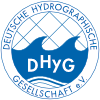The Crazy Dunes
During their doctoral theses in sea ice physics at the AWI, two researchers were given the opportunity to take part in an echo sounding training cruise on the research vessel Polarstern in 2018. Instead of sea ice, this time the focus was on sea dunes, in particular an unusual formation they called »Crazy Dunes«. These dunes in the English Channel showed a symmetrical pattern around a central point – an indication of opposing currents. By using multibeam echo sounders and sub-bottom profilers, they were able to analyse morphology and internal structures. The project highlighted the importance of interdisciplinary research and sparked a new enthusiasm for marine geomorphology.
English Channel | dunes | multibeam echo sounder | sub-bottom profiler
Während ihrer Doktorarbeiten in der Meereisphysik am AWI erhielten zwei Forscher 2018 die Gelegenheit, an einer Echolotungs-Trainingsfahrt auf dem Forschungsschiff Polarstern teilzunehmen. Statt Meereis standen diesmal Meeresdünen im Fokus, insbesondere eine ungewöhnliche Formation, die sie »Crazy Dunes« nannten. Diese Dünen im Ärmelkanal zeigten ein symmetrisches Muster um einen zentralen Punkt – ein Hinweis auf entgegengesetzte Strömungen. Durch den Einsatz von Fächerecholot und Sedimentecholot konnten sie Morphologie und innere Strukturen analysieren. Das Projekt verdeutlichte die Bedeutung interdisziplinärer Forschung und weckte eine neue Begeisterung für marine Geomorphologie.
Ärmelkanal | Dünen | Fächerecholot | Sedimentecholot


